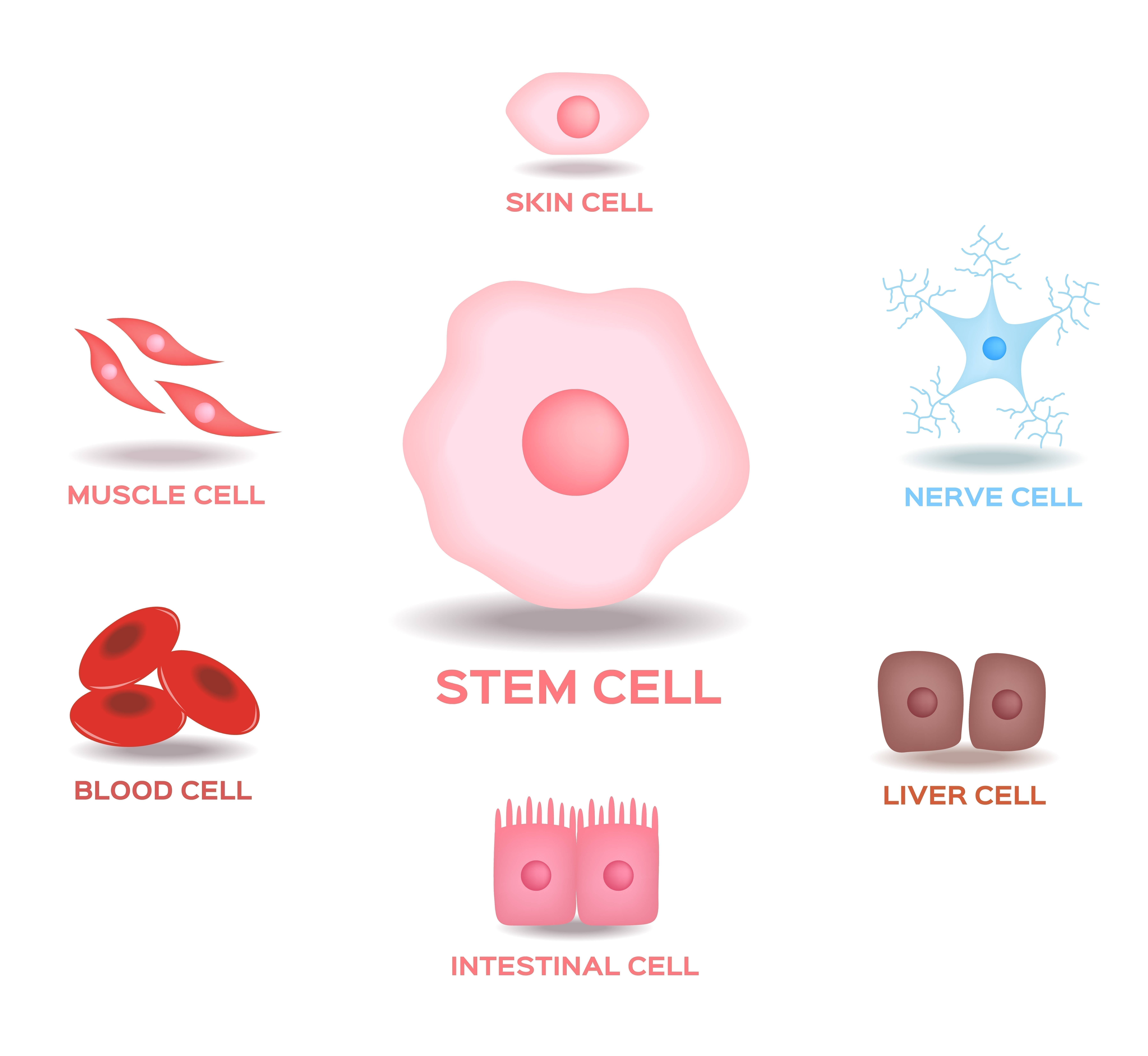ADULT STEM CELLS
Mesenchymal, Somatic or Adult Stem cells were discovered more than 50 years ago by researchers. These cells that are present in the bone marrow have healing properties. They are undifferentiated, that is, they have not developed into a specialized cell type.
A single cell that can replicate itself or differentiate into many cell types.
They may:
- Make copies of themselves
- Become bone, muscle, cartilage or fat tissue
- Combat cell death associated with illness or aging
- Help reduce painful swelling due to inflammation

As you age, the number of stem cells in your body starts to decline, therefore so does the time it takes to repair sites of injury. Adult mesenchymal stem cells (MSCs) are the only stem cells that can transform into bone, cartilage, tendon, or ligament cells, depending on what your body needs to repair.
These stem cell powerhouses modulate your immune system, rapidly grouping to the site of injury in order to start repairing your own body from the inside out.
MSCs are also the only stem cells that produce fibroblasts cells which repair and produce collagen, elastin and glycosaminoglycan. MSC treatments for the skin help increase fibroblast activity and therefore skin firmness, elasticity and hydration.
Stem cells can help in the repair of injured and damaged structures and they also create new cells in existing healthy tissue.
Cell types that makeup each organ in the body are derived from stem cells. Stem cells give rise to progenitor cells that have more specialized functions and are no longer undifferentiated (For example, brain cells, red blood cells and in particular, components of bone and cartilage). Originally, it was thought that adult stem cells can only generate the same type of tissue from which they originated but new studies have shown that adult stem cells can potentially generate other cell types, as well. This property is called transdifferentiation or plasticity. For example, liver cells can produce insulin, which is normally produced by the pancreas.
In the proper environment, bone marrow stromal cells (which are mesenchymal stem cells) can differentiate into cells of the musculoskeletal system and can help in the formation of trabecular bone, tendon, ligaments, articular cartilage and part of the bone marrow.
Therefore, mesenchymal stem cells that are obtained from living adult tissue have gained a lot of attention especially from orthopedic surgeons.
The Treatment Process
Regenerative therapies are much simpler and much less invasive than other surgical procedures. These procedures are safe, effective and affordable.
It is important for the physician to review the history of illnesses and injuries of the patient (including X-rays and MRIs). This will help the physician in determining whether an adult stem cell procedure will provide benefit to the patient. Since every patient is different, there are no guarantees that the medical treatment will result in the same clinical outcome for all. Anything that could affect or alter the success of the adult stem cell procedure will be evaluated by the surgeon before regenerative therapies are prescribed.
If the patient meets the criteria and is a good candidate for the procedure, he/she will meet with the nursing team and the physician to review the procedure and to have any questions/concerns addressed.
Adult Stem Cells vs. Embryonic Stem Cells
There have been ethical concerns regarding the use of embryonic stem cells, primarily because they are harvested from discarded human embryos left over from in-vitro fertilization.
This website and all the information contained here regarding potential treatments for pain and injury pertain only to adult stem cells and NEVER embryonic stem cells.
Adult Stem Cells
Adult stem cells are found in small numbers in most adult tissues including bone marrow and fat. In contrast to embryonic stem cells, these cells are:
- Safe and do not harm the donor
- Since these cells are coming from the patient’s own body there is no risk of rejection
- There is no risk of tumor formation and this has been supported by a large study with nearly 2000 patients with an average follow-up of more than 12 years
Embryonic Stem Cells
These cells have the capability to divide into more stem cells and can become any cell type in the human body. These cells are obtained from embryos that are three to five days old. An embryo is called a blastocyst at this stage, and has about 150 cells. The use of embryonic stem cells has been limited to eye-related disorders such as macular degeneration, because of several drawbacks associated with this type of cells. Some of these are listed below:
- Requires destruction of human embryos
- Since these cells are coming from another person, there is the risk of rejection
- May cause tumors at the point of injection